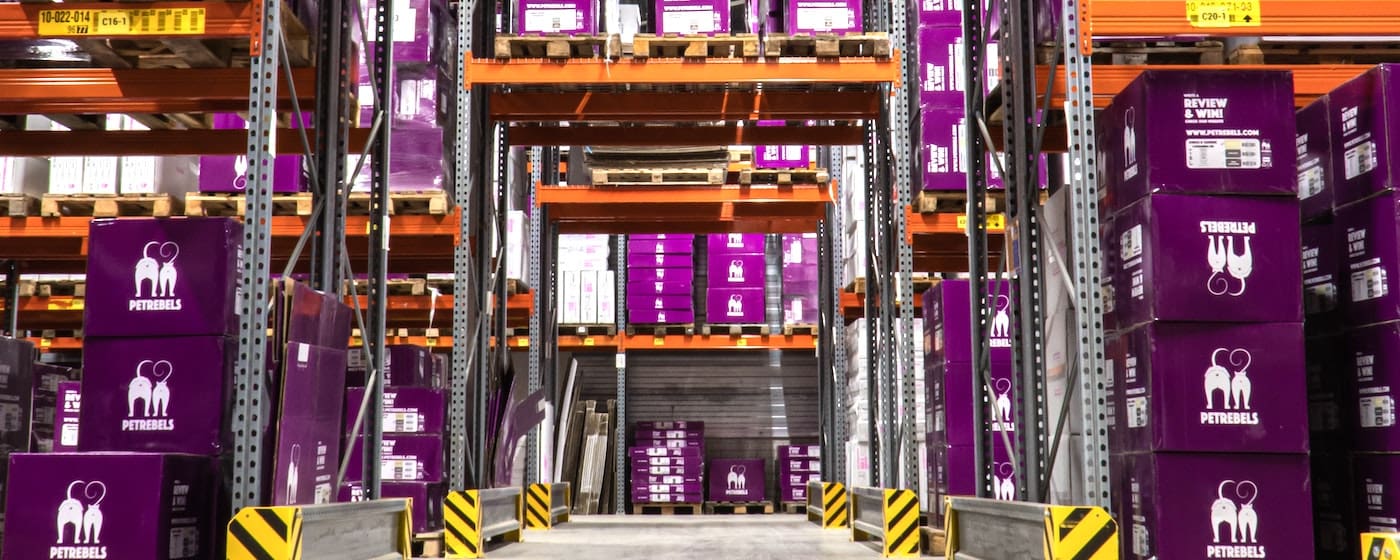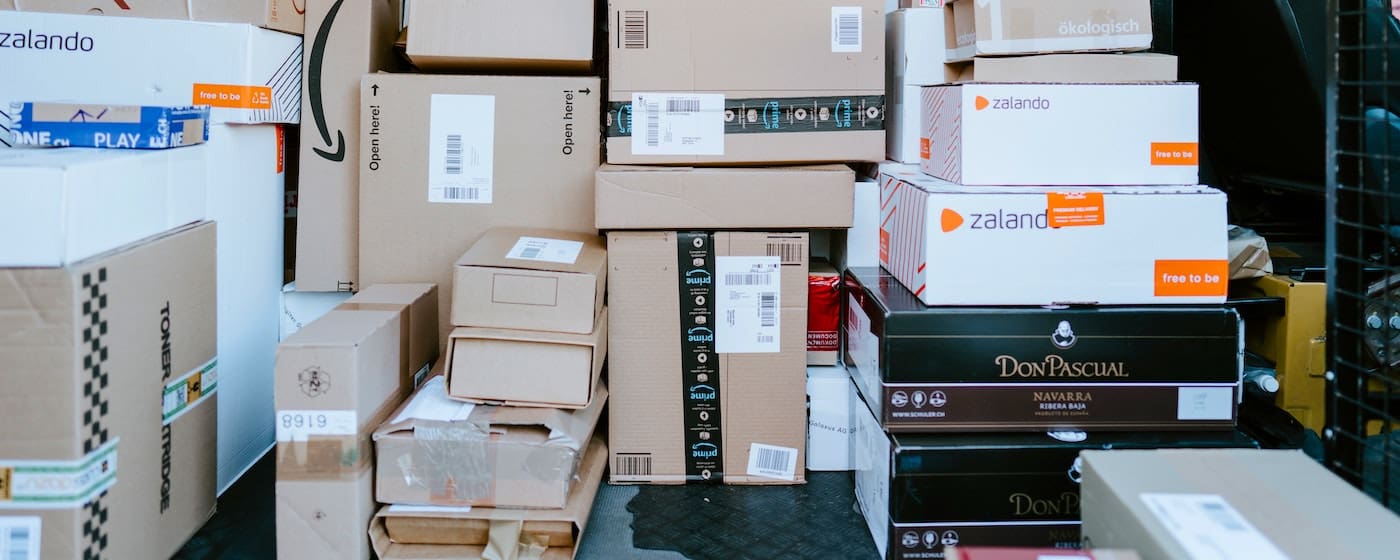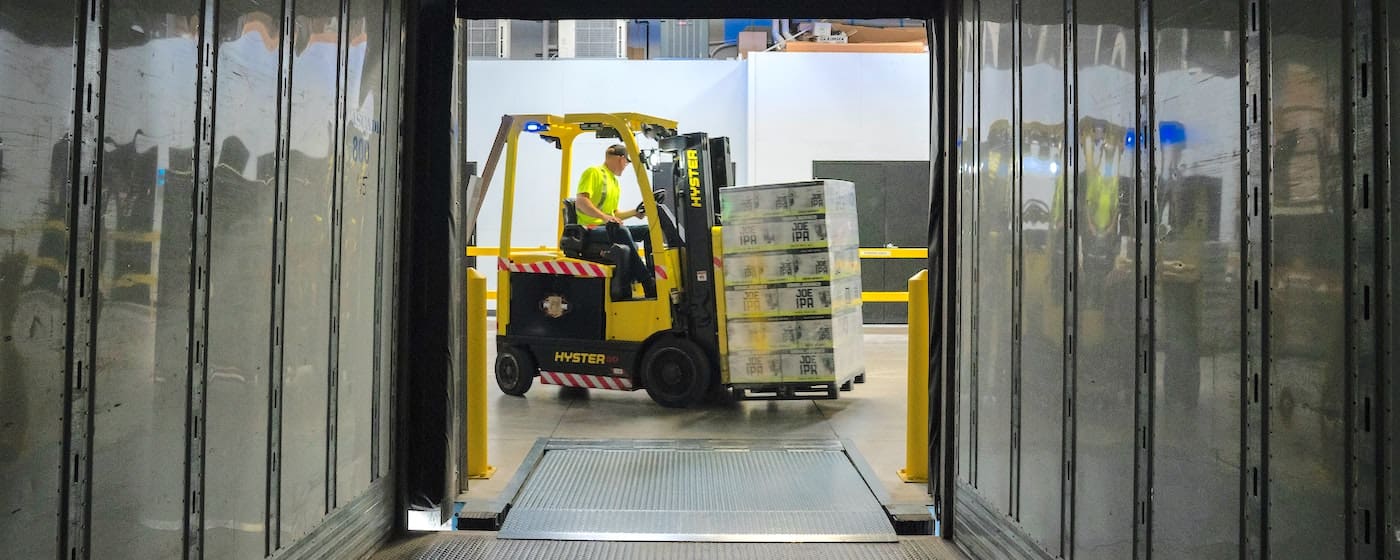Table of Contents
** Minutes
The three inventory cost categories
How to calculate inventory costs
Common inventory cost blunders
3 factors affecting your inventory costs
3 tips to keep inventory costs low
As an online business owner, keeping an eye on your biggest asset — your inventory — is one of the most important tasks you’ll take on.
Having an inventory strategy in place can help reduce inventory risk, including mitigating high costs. But tracking inventory costs day by day can be challenging because there are multiple components associated with the overall costs.
In this article, we’ll describe the different types of costs associated with inventory, how to track and calculate them, and what you can do to better manage inventory by understanding common factors that influence costs.
What are inventory costs?
Inventory costs involve the expenses associated with purchasing, storing, and managing inventory throughout the ecommerce supply chain.
The cost of inventory goes beyond the initial purchase, including storage costs, as well as the costs of holding unsold finished goods.
Why are inventory costs important?
Keeping track of inventory costs is one of the most important expenses to track. When too much capital is tied up in inventory, it can negatively impact your bottom line.
Having an accurate idea of how much you’re spending on inventory will help you understand how to manage this important expense more strategically to keep your overall costs low and your profits high.
This can be done in several ways, including:
- Proper inventory forecasting to optimize inventory levels
- Implementing strategies to save on storage and warehousing costs (e.g., warehouse slotting)
- Executing consistent inventory valuation methods to track inventory discrepancies
The three inventory cost categories
There are three primary categories of inventory costs: ordering, carrying, and stockout costs.
Understanding these different types of costs associated with inventory can help you understand the best ways to track, manage, and calculate the total costs of your inventory investment.
Ordering costs
When replenishing inventory, many of the additional costs are often overlooked or dismissed.
Keep in mind that you’re not just paying for the new batch of inventory, you’re also paying for first-mile delivery, warehouse receiving, and other fees.
These costs can add up, which means it’s important to not only look at the costs of procurement but also the costs of shipping inventory to your warehouse or fulfillment destination, plus the costs of receiving and storing inventory once its received (which includes labor).
Carrying costs
Inventory carrying costs refer to all the fees and expenses for keeping items stored before they are sold.
Carrying costs can vary based on the type of product you sell and the costs of storage. This type of costs can include fees such as taxes, insurance, labor wages, and warehouse rent.
In many cases, you may even have to pay for replacing damaged or perished goods, which further adds to your carrying costs.
Stockout costs
Stockout costs represent the loss of income and additional expenses resulting from inventory shortage.
Say you run out of stock for a particular item, but the information isn’t updated on time on your store, so orders continue to process. The customer is then notified about the out of stock item later and must be granted a refund.
The business then has to bear the cost of processing a refund and losing out on the sale.
6 types of inventory costs
When calculating total inventory costs, you’ll need to track several different expenses to understand how much inventory is costing you in a given period of time.
Storage costs
Storage costs refer to the cost of maintaining inventory storage systems. This can include recurring costs such as rent, utility, security, and employee wages.
Keep in mind that storage costs can quickly add up if you’re holding stock for too long, especially if some of the inventory has become unsellable (e.g., expired or obsolete).
For unsellable inventory, until these items have been donated or disposed, holding them for too long can quickly impact your bottom line due to higher costs and less sales.
Capital costs
Your capital costs refer to the one-time lump sum expenses required for physically storing your inventory.
This type of cost can involve buying warehouse space, for example. Capital costs are typically the most expensive inventory-related costs for businesses.
Sometimes, you might run into a lack of warehouse space. Increasing warehouse capacity can also be associated with this type of costs, so it’s important to audit your warehouse space a few times a year.
Theft and fraud
You also have to consider the cost of inventory shrinkage resulting from criminal activities, such as theft and fraud.
Dishonest employees and malicious consumers could pose a serious threat to your inventory costs, making it crucial to ramp up your investment in security solutions to protect against these threats.
Fees (tax & insurance)
Businesses must also consider the cost of paying for taxes and insurance. Avoiding these costs could have serious implications for your business further down the line.
Since the actual costs and requirements may vary for each industry, we recommend seeking professional guidance on this topic. For example, opening a separate business bank account is essential for LLC owners to maintain clear financial separation between personal and business expenses. This distinction not only ensures accurate accounting but also safeguards the limited liability protection that the LLC structure offers. It simplifies tax reporting, demonstrates a commitment to professionalism, and can help in the event of an IRS audit or legal matters, protecting personal assets from business liabilities
Damage & obsolescence
Inventory can get damaged in storage, which comes with additional costs on its own.
Moreover, there’s the risk of inventory becoming obsolete, which can occur when you have too much unsold inventory that’s reached the end of its lifecycle.
Businesses end up losing a lot of money on these items since they still need to pay for the cost to procure and carry these items.
Poor investment budgeting
When you deploy inventory investment without a proper plan or budget in place, you could risk losing a lot of money.
For example, if you buy inventory without planning how much stock you need, you could risk buying inventory you don’t actually need. This will later add to your carrying costs if it ends up being unsold.
Tracking historical order data and having a system in place to track inventory in real time can help improve demand forecasting, so you’re not overpaying in inventory.
How to calculate inventory costs
Your inventory costs have a direct impact on your profits, which is why it’s important to accurately calculate your inventory costs, so you can have a clear idea of how much you’re spending on inventory.
Here is a high level overview of how to calculate inventory costs.
Inventory cost formula (with example)
Your inventory cost can be calculated using the formula below:
Inventory Cost = (Beginning Inventory + Inventory Purchases) – Ending Inventory
So, let’s say you start out with $50,000 worth of inventory at the beginning of the year. Over the next 12 months, you end up buying $150,000 worth of inventory. By the end of the year, you have $75,000 worth of inventory remaining. In that case, your inventory costs would be as follows:
Inventory Cost = (50,000 + 150,000) – 75,000 = $125,000
Use online inventory cost calculators
To simplify the process, you can also opt for online inventory cost calculators. These will automate the calculation for you, helping you save time and improve inventory accuracy.
You just need to enter the necessary data on your beginning inventory, ending inventory, and inventory purchases throughout the year.
The tool will then automatically make the calculation for you and make the job much more efficient.
Common inventory cost blunders
Inventory cost calculation doesn’t necessarily create complications for your business.
However, if neglected, it can cause serious issues in different aspects of your inventory management.
Here are some of the inventory cost blunders you should avoid making.
Managing inventory post-product launch
It’s a common misconception that you should manage your inventory only after the product launches.
This could put you at risk of having to deal with the expensive cost of disorganized inventory and supply issues.
For example, you might end up selling out soon after launch, so if you didn’t anticipate this beforehand, it might take several months to produce and restock. That means you could risk losing potential customers during the long waiting period.
Neglecting to include inventory management when forecasting
While previous sales data is often used when forecasting future sales, this data isn’t enough to make accurate predictions.
Many companies underestimate the importance of inventory management software during forecasting, which provides you with important insights to maintain optimal inventory levels at your warehouse.
The right inventory tracking system can help you track SKU performance, average lead times to receive new inventory, inventory turnover rate, and more, so you can make accurate predictions on when and how much to restock and when.
Siloing inventory management processes
Many businesses make the mistake of leaving their inventory management processes to the “pros.” When only a handful of employees can handle your inventory tracking and ordering, it limits supply chain visibility.
As a result, you’re more likely to experience bottlenecks that cause delays in stock availability, which ultimately adds to your inventory costs.
Using the right inventory software that’s usable by everyone will ensure better visibility and coordination between team members as they can enjoy improved inventory tracking capabilities.
Always buying in bulk
Bulk purchases often save you money, but it’s not necessarily the best idea if you don’t use or sell the items before their expiration date.
You’ll only end up losing money on unsold items that either become obsolete or expired.
Understocking
On the contrary, some businesses may also try to save money by limiting the amount of stock they have.
However, it’s still better to be overstocked than understocked. If your products are consistently out of stock due to an underestimation in demand, you’ll frustrate customers and lose them to the competition.
Underestimating the need for inventory management software
Inventory management is an intricate process. It’s not enough to rely on spreadsheets and manual processes, which can be inefficient and prone to mistakes.
Strategic inventory solutions can help you get out of these sticky situations.
Tracking inventory over time and having contingency plans in place for potential inventory problems will prepare you for situations that would otherwise seriously impact your business.
3 factors affecting your inventory costs
Beyond the predictable costs such as taxes, insurance, and storage costs, there are also other unexpected factors that may affect your inventory costs.
1. Transit delays
Inclement weather and other unforeseen disruptions can cause transit delays in getting inventory to your warehouses.
Recently, the impact of the pandemic on freight and shipping has been monumental. Many companies were affected by congested supply chains due to transit delays, which resulted in expensive stockouts and loss of business.
2. Sudden change in demand
Every business can experience a sudden change in demand owing to a number of factors. Bad press could lead to a drastic drop in demand, while an influencer’s raving review could have the opposite effect.
Additionally, geopolitical issues and other factors could also result in unexpected demand changes, which will subsequently affect your inventory costs.
3. Low warehouse vacancy rates
When there’s limited warehouse vacancy, it becomes challenging to offload goods and make room for more seasonal products.
As a result, retailers have to resort to solutions that impact their inventory costs. For instance, the cost of renting new space or getting rid of old stock can have an impact on total inventory costs.
3 tips to keep inventory costs low
Despite all these factors and challenges, there are measures you can take to keep your inventory costs low.
Reorder stock appropriately
Using different inventory metrics, you can get better at restocking inventory in the appropriate amounts. You want to make sure you’re not ordering too much or too little stock to avoid the high cost of stockouts and overstocking.
ShipBob, for instance, will use forecasting and analytics to ensure that you’re maintaining optimal inventory levels at all times.
By setting accurate reorder points and timely reorder notifications, you can efficiently replenish your stock.
“ShipBob lets you manage your inventory while providing important data in a very digestible way. Another ShipBob integration I love is Inventory Planner. It saves me hours every week in Excel spreadsheets, and I can raise a PO in minutes when it used to take me hours.
For every order I placed for years, I was ordering too much or not enough. Between inventory forecasting tools and the ability to auto-create WROs, we don’t have stockouts much anymore. I sleep better at night.”
Wes Brown, Head of Operations at Black Claw LLC
Remove dead stock
As much as you want to turn unsold inventory into revenue, the cost of carrying can quickly eat away at your profits if inventory sits on shelves for too long.
Be sure to proactively track and get rid of dead stock accumulation to free up valuable storage space for more high-selling items.
“We have easy ways to manage subscription orders as well as expiration dates and lot numbers, so inventory goes in First In, First Out (FIFO).”
Leonie Lynch, Founder & CEO of Juspy
Be wary of deals when managing inventory
Some suppliers may offer “buy one, get one free” deals to get rid of unwanted stock.
While this may seem appealing at first, it can also add to your inventory costs since your carrying costs will increase.
Make sure to avoid overstocking simply because you got a great deal. Instead, stick to your original inventory management strategy to avoid the high cost of overstocking.
ShipBob’s inventory management will save your cash
ShipBob’s fulfillment platform comes with built-in inventory management tools, so you can easily track inventory in real time across multiple fulfillment locations and sales channels with ease.
“We utilize ShipBob’s Inventory API, which allows us to programmatically retrieve real-time data on how many units of each product are currently stored at ShipBob’s warehouses. We currently use this API to generate custom reports to tie this inventory data into our accounting platforms.”
Waveform Lighting Team
ShipBob allows you to expand your business without losing sight into the day to day with access to tools that lets you manage SKUs, forecast demand using historical data, set up notifications for inventory replenishment, and more.
Along with managing inventory, you can track costs including storage and fulfillment costs throughout your entire network. Understanding logistics costs in real time can help you make better decisions and adjust inventory levels and reorder accordingly.
To learn more about ShipBob’s omnichannel fulfillment solution, click the button below to receive more information.
Inventory costs FAQs
Here are answers to the top questions about inventory costs.
What are the major components of inventory costs?
There are three primary components that make up inventory costs: ordering costs, carrying costs, and stockout costs. These costs take into account procurement, storage and warehousing fees, and the costs associated to not having enough inventory to meet demand.
What is not considered part of inventory costs?
Every business is different, but in most cases costs such as production labor, selling, and distribution are not taken into account of overall inventory costs.
What are the types of inventories?
Types of inventory includes raw materials inventory, work in progress inventory, and finished goods. Unless your business sells raw materials to other businesses or handcrafted goods to customers, most ecommerce businesses only manage finished goods once they are received from the supplier.



